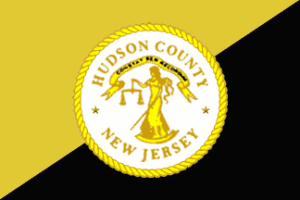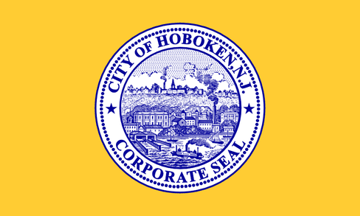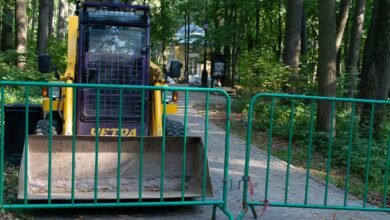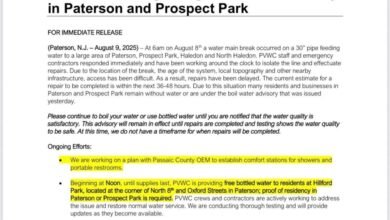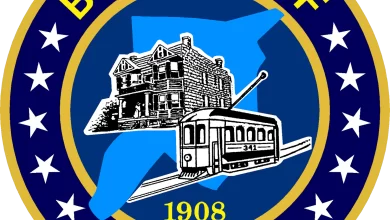
Hoboken, NJ: From Docks to Brownstones, The Dual Pulse of a Changing City
Across the river from Manhattan, Hoboken, New Jersey is often seen as a commuter’s paradise, a bar-hopping hub, or a brownstone enclave with million-dollar views. But behind the curated storefronts and renovated row houses lies a rich and complex story—a city built by immigrants, dock workers, artists, and activists. Hoboken is a place where waterfront wealth meets working-class memory, and where communities are still fighting for space, justice, and voice.
Origin and History
Hoboken’s layered past is central to the development of the New York metro region.
- Lenape Roots: Before European colonization, the Lenape people fished and traveled along the shores of the Hudson, where Hoboken now sits.
- Colonial Landholdings: Originally part of the Pavonia settlement, Hoboken was later purchased and developed by the Stevens family in the early 19th century.
- Industrial Hub: By the mid-1800s, Hoboken became a key port city with shipyards, dry docks, and ferry terminals that fueled regional commerce. It was also the headquarters of shipping giant Hamburg-America Line.
- Immigrant City: Irish, Italian, German, Puerto Rican, and later Dominican and South Asian immigrants turned Hoboken into a working-class, multicultural city.
- Birthplace of Frank Sinatra: “Ol’ Blue Eyes” was born here in 1915—his legacy still honored with parks and plaques.
Demographics
Hoboken today is a city of contrasts—affluent and striving, diverse and rapidly transforming.
- Population: Approximately 60,400 residents (2020 U.S. Census)
- Cultural Composition: Historically Italian and Puerto Rican, now home to significant Latinx, South Asian, Filipino, Black, and white populations—with recent waves of young professionals and international transplants.
- Languages Spoken: English, Spanish, Tagalog, Portuguese, and Hindi are heard in homes, bodegas, and schoolyards.
- Gentrification & Income Gaps: While median incomes exceed $160,000, pockets of poverty persist—particularly among renters in public housing and seniors on fixed incomes.
Geographic Location and Size
Hoboken’s small size and strategic location give it both charm and density.
- Size: 1.25 square miles
- Borders: Bounded by Weehawken, Jersey City, and the Hudson River—with stunning skyline views.
- Transit Access: PATH train to Manhattan, NJ Transit rail and buses, NY Waterway ferries, and Citi Bike hubs make Hoboken one of NJ’s most transit-connected cities.
Where We Thrive
Hoboken thrives in the balance of memory and movement—its people make the city real.
- Public Schools & Charters: Hoboken Public Schools serve a diverse student population alongside charter and private institutions; equity remains a key issue.
- Faith & Community Spaces: Local churches, mosques, and community centers provide food, housing support, and youth mentorship.
- Black & Brown Organizing: Groups like Hoboken Housing Authority tenants associations, youth arts collectives, and immigrant support networks anchor deeper change.
- Arts & Events: From the Hoboken Arts & Music Festival to small galleries and open mic nights, the city’s creative legacy endures.
Fun Facts and Local Gems
- Birthplace of Baseball: The first officially recorded baseball game was played in Hoboken’s Elysian Fields in 1846.
- Frank Sinatra Park: A waterfront space with views of Manhattan and events that celebrate local culture.
- Hoboken Terminal: A historic Beaux-Arts transportation hub that still anchors daily movement for tens of thousands.
- Mile Square Theater & Bars: Hoboken has long supported indie artists and musicians—even as rents rise and venues shift.
Challenges and Change
As Hoboken grows more desirable, it risks losing some of its roots.
- Housing Inequity: Affordable housing has dwindled. Many low-income families and elders face rent hikes or redevelopment pressures.
- Displacement & Cultural Erasure: Public housing residents and longtime Latinx communities are being priced out—while their stories go untold.
- Overdevelopment & Environmental Risk: Waterfront construction increases flood vulnerability, despite green infrastructure efforts.
- Representation Gaps: Political and institutional leadership remains largely white and professional, despite deep BIPOC community contributions.
Community Voices
“This city was built by hands that never made the brochure. But we’re still here—cooking, organizing, teaching, marching. Hoboken’s story is ours too.”
— Felix M., second-generation Puerto Rican educator and lifelong resident
Why Hoboken Matters
Hoboken is more than a postcard—it’s a reflection of New Jersey’s contradictions: beauty and displacement, access and exclusion. It’s a city where the past is visible in red bricks and river docks, and the future is being written by young leaders, immigrant families, and artists refusing to be erased.
HFYC uplifts Hoboken because beneath every polished façade is a working-class story worth hearing—and preserving.
Call to Action
Are you from Hoboken? Know a youth leader, tenant activist, local artist, or neighborhood elder whose story should be told?
Let’s elevate their voice.
Submit a story, nominate a changemaker, or share what Hoboken means to you—from the high-rises to the Housing Authority.
